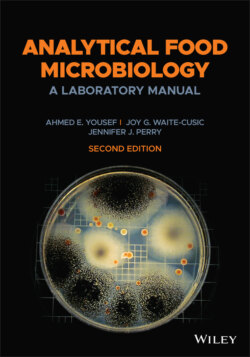Читать книгу Analytical Food Microbiology - Ahmed E. Yousef - Страница 29
Sampling Principles Introduction
ОглавлениеIn the simplest sense, a “sample” may be defined as a small and manageable quantity intended to represent the whole. The whole is commonly referred to as the “population,” and in relevance to the subject matter of this book, the population is the food lot. Foods vary considerably in physical, chemical, and microbiological characteristics. These variations dictate the way a food is sampled and analyzed. Physically, food could be in a solid, gel, or liquid state, at different degrees of hydrophobicity, with ingredients in homogeneous or heterogeneous distribution. Compositionally, foods vary in water content, pH, presence of antimicrobial ingredients, and many other attributes. Foods differ in microbial burden and profile; this depends on whether the food is raw or processed, and the type of processing it received. The goal of the analysis also varies. Some foods are analyzed for the enumeration of indicator microorganisms (e.g., coliforms), whereas others are tested for the presence of pathogens (e.g., Listeria monocytogenes). These factors must be taken into account to determine appropriate sampling, sample preparation, and microbial recovery methodology.
Figure 2.1 Food sampling.
Foods subject to analysis are usually found in sizable quantities located in a storage facility, ship container, tanker, retail display case, vendor stand in open market, etc. With consideration of the size of the food lot and expected variations among multiple samples from the same lot, a number of samples are collected for analysis on the hope that they accurately represent the entire lot. If samples taken are not a good representation of the whole, whether it is the fault of the sample collector or due to an error inherent in the sampling plan, the laboratory results will be misleading. Therefore, sampling operations should be planned well. Additionally, every effort should be made to avoid mishandling or contamination of the collected sample. Correctly withdrawn, handled, and analyzed samples may serve as evidence of the quality or the safety of the whole.
Although food is emphasized in this book, sampling and analysis of water and processing environment will also be addressed. A sample of water from a stream is described as a “specimen.” Similarly, samples from circulating cleaning or rinsing solution or swabs from a moving conveyer belt are also considered specimens. In these situations, the population sampled is not static and thus getting a representative portion is a challenging task.
